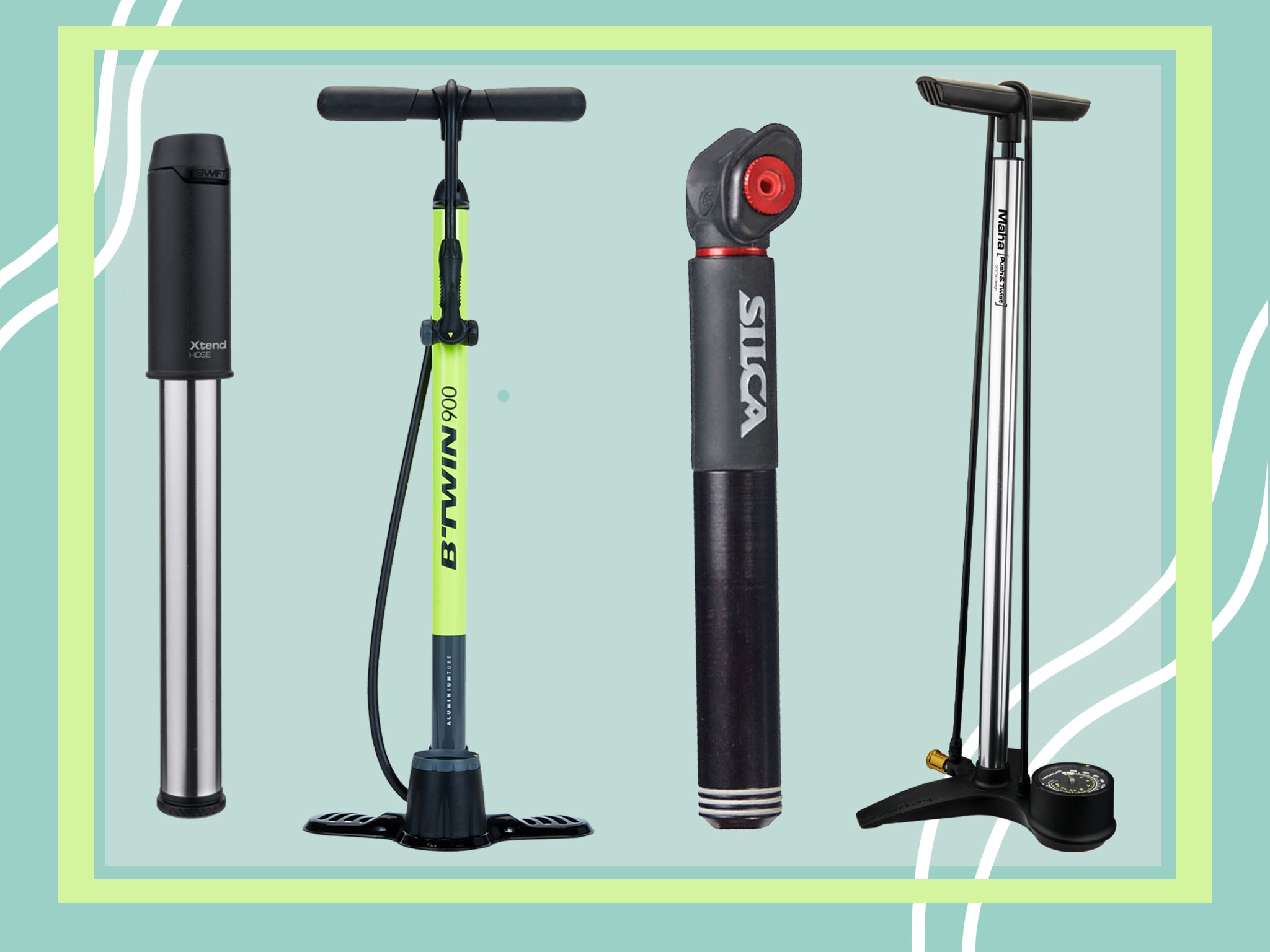The Independent's journalism is supported by our readers. When you purchase through links on our site, we may earn commission. Why trust us?
9 best bike pumps to get prepared for every journey
Whether you’re racing, commuting or mountain biking, make sure you've got one of these essential cycling tools in tow

An essential tool for any cyclist – from commuters to roadies, mountain bikers and bikepackers – the right bicycle pump is the difference between a miserable roadside puncture and a swift recovery.
But pumps aren’t just for emergencies: they should be part of your regular bike maintenance. Some cyclists like to measure and adjust tyre pressure every time they ride – but if you’re a casual rider, a weekly squeeze test and a few pumps is fine. If you haven’t ridden your bike in a while or the weather has changed (particularly if it’s been cold), your tyres will most likely need a bit of a boost.
We tested these pumps on a wide range of tyres, from a skinny road tyre with very high pressure (125 PSI) to a super fat mountain bike tyre (60 PSI), inflating from flat to max pressure with each one. We looked for a combination of speed and comfort, bearing in mind pump weight and size – a pro needs to get back on the road quickly, but not at the expense of extra weight.
There are a handful of really essential rules for buying a bike pump. First, check it will fit your tube valve. These come in two types, Schrader and Presta. The former is the chunkier, often rubber-coated valve you see on most hybrid and mountain bikes.
Presta valves are skinner, usually all metal, and have a little nut at the top that you need to unscrew with before you can pump air in. While both take very different pump heads, most modern pumps have reversible heads that can inflate both kinds – where that’s not the case with the pumps we’ve reviewed, we’ve made it clear.
Second, you need to make sure the pump fits the PSI (pressure) of your chosen tyre and your riding style. Skinny road tyres have a higher PSI while hybrid bikes and mountain bikes prefer a lower pressure – you can find the PSI written on the outside of the tyre, usually as a lower and upper limit, and you should aim for the upper-middle.
At a pinch, any pump will work with any PSI, but it won’t get you to the upper limits of your road tyre’s range before your arm drops off. If you want rock hard roadie tyres, buy a pump with a higher capacity.
There’s no real need to obsess about pressure if you just plan to commute or go on short rides: the harder the tyre the easier and faster (but bumpier) your ride, and you can easily determine this by squeezing it. If you compete, buy a pump with a pressure gauge, to take out the guesswork.
Finally, decide whether you want a floor pump or a portable pump. Every cyclist needs a portable pump to recover from punctures; a floor pump is a nice luxury, and a good tool to have to maintain your own bicycle at home.
You can trust our independent reviews. We may earn commission from some of the retailers, but we never allow this to influence selections, which are formed from real-world testing and expert advice. This revenue helps to fund journalism across The Independent.
Subscribe to Independent Premium to bookmark this article
Want to bookmark your favourite articles and stories to read or reference later? Start your Independent Premium subscription today.
The verdict: Bike pumps
The Lezyne micro floor drive is still our favourite pump, offering the easy inflation of a floor pump at a size and weight that you can carry with you. The truflo digitrack track pump was our favourite floor pump, a luxurious addition to our home workshop.
